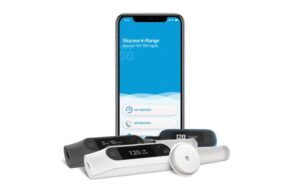
The FDA-cleared Bigfoot Unity platform aims to simplify continuous glucose monitors (CGMs) and the data they produce. It features a smart insulin pen cap, which takes data from a CGM and informs the patient exactly how much insulin they need.
Milpitas, California-based Bigfoot Biomedical published the six-month retrospective analysis in the American Diabetes Association’s (ADA) journal, Clinical Diabetes. Dr. Bantwal Baliga, East Alabama Endocrinology, served as lead author of the manuscript.
In an initial real-world, 58-person cohort, results highlight Bigfoot Unity’s ability to support rapid and durable improvement in glucose control. It evaluated the system in people with diabetes who use multiple daily injections of insulin.
“Even with access to CGM data and counsel from their healthcare teams, people living with diabetes still struggle with knowing how much insulin to take when they are about to give themselves a dose,” Baliga said in a news release. “The majority of people in the analysis had previous experience with CGM, so the data suggest that recommendations from the patient’s provider displayed right on the insulin pen cap contribute to the observed improvement in glycemic control.”
About the methods used in the Bigfoot Biomedical study
The retrospective analysis initially evaluated 75 Bigfoot Unity system users across 13 clinics. These subjects used the system for six months. A cohort of 58 users qualified for the prespecified real-world clinical outcomes analysis. Those subjects had at least 50% of CGM data within the first two weeks and in the sixth month of system use.
Bigfoot Biomedical reported the average age of patients in the analysis as 62 years old. The company said 84.5% of subjects had type 2 diabetes. Most individuals previously used CGM (76%). Nearly all reported themselves as new to using smart insulin pens (96%) and diabetes apps (93%).
The study obtained a baseline HbA1c from the clinical records of 51 patients prior to starting their use of the system. Bigfoot Biomedical said the study used glucose management indicator (GMI) as a proxy for HbA1c after patients began use of the system.
Limitations of the results include the retrospective nature of the analysis, the small sample size and the lack of HbA1c during use. Bigfoot Biomedical also reported limitations including a lack of a control group and self-reported adverse event data.
The results
In a paired analysis, 50 individuals with available baseline HbA1c and GMI values had a mean starting HbA1c of 8.3% and GMI of 7.3%. This measurement came after six months of system use.
Bigfoot Biomedical said 36 users with prior CGM experience had a mean baseline HbA1c of 8.2% and GMI of 7.3% at six months. Twelve users with no prior CGM experience recorded 9% and 7.1% measurements, respectively.
The study saw time spent with low glucose and very low glucose come in at 1.4% and 0.2%, respectively, at six months. That landed below established treatment guidelines of 4% and 1%.
Mean two-hour postprandial (post-meal) glucose fell within ADA guidelines of <180 mg/dL. According to Bigfoot Biomedical, this suggests the importance of displaying clinician-directed meal and correction dose recommendations.
The study identified two adverse events unrelated to system use. These were reported as hyperglycemia of unknown severity and a cardiac event resulting in death. Neither occurred within the cohort of 58 patients meeting the CGM analysis criteria.
“Given that the majority of patients in this cohort were not new to using CGM but were new to using smart technology for pens and support apps, this analysis suggests that patient engagement with the Bigfoot Unity System and HCP-directed meal and correction dose recommendations may contribute to improved glycemic control,” Bigfoot Biomedical concluded.

